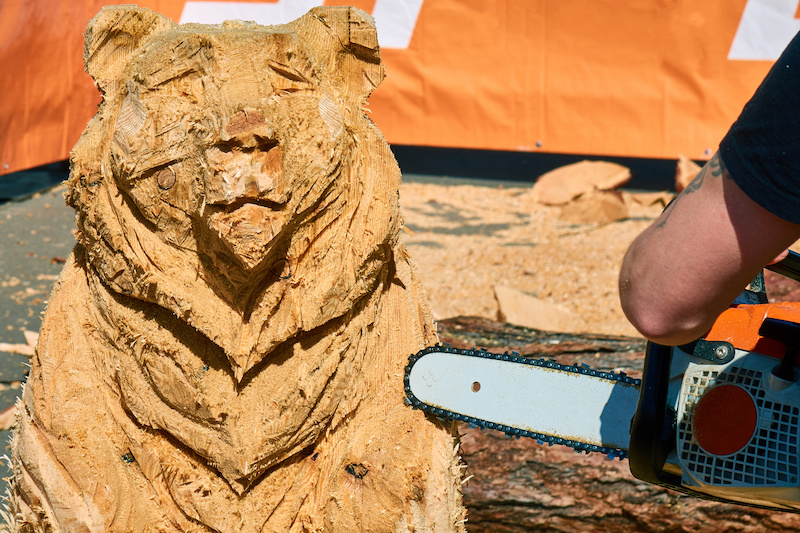Chainsaws are indispensable tools for many, used in forestry, landscaping, and even in some artistic endeavors. However, like any machine, a chainsaw requires regular maintenance to function efficiently and safely. Neglecting maintenance can lead to decreased performance, higher risk of accidents, and a shorter lifespan for the chainsaw. This blog post aims to provide a comprehensive guide on chainsaw maintenance, covering various components, their maintenance needs, and the frequency at which these tasks should be performed.

Regular Inspection and Maintenance are Key to Chainsaw Performance
Regular inspections and maintenance are crucial for the safe and efficient operation of a chainsaw. It’s advisable to perform a quick check before each use, a more thorough inspection after significant use, and detailed maintenance at regular intervals, typically after every 10 to 20 hours of operation. The exact frequency can depend on the chainsaw’s model, age, and the intensity of the tasks it performs.
Chainsaw Components and Maintenance Needs
- The Chain
- Frequency: Before and after each use; sharpen as needed.
- Maintenance: Inspect the chain for dullness, damage, or excessive stretching. A sharp chain is crucial for efficient cutting and safety, reducing the likelihood of kickback. Use a file or a chainsaw sharpener to maintain sharpness, following the manufacturer’s specifications. If the chain is significantly worn or damaged, it should be replaced.
- The Bar
- Frequency: After every 10 hours of use.
- Maintenance: Check the bar for wear, bends, and cracks. Clean the groove and oil holes regularly to ensure smooth chain movement and adequate lubrication. If the bar is worn unevenly, it can usually be rotated to promote even wear. A damaged bar should be replaced to maintain safety and performance.
- The Teeth
- Frequency: Before and after each use.
- Maintenance: The teeth should be sharp and properly set for effective cutting. Use a round file for sharpening, ensuring you maintain the correct angle and depth settings as per the manufacturer’s guidelines. Dull or improperly sharpened teeth can increase the risk of kickback.
- The Safety Guard
- Frequency: Before each use.
- Maintenance: Ensure the safety guard is in place and functioning correctly. It’s a crucial feature designed to protect the operator from flying debris and to reduce the risk of accidental contact with the chain.
- The Engine (for gas-powered chainsaws)
- Frequency: After every 10 hours of use; more thorough maintenance annually.
- Maintenance: Regularly check the engine’s condition, including the air filter and cooling fins. Clean or replace the air filter as needed to ensure efficient operation. Annually, consider having the engine checked by a professional to adjust the carburetor and to inspect the condition of internal components.
- Oil System
- Frequency: Before each use; refill as needed.
- Maintenance: Check the oil level and refill with the correct type of chain oil before each use. Regularly clean the oil port and ensure the oiler is functioning properly to maintain adequate chain lubrication.
- Fuel System (for gas-powered chainsaws)
- Frequency: Before each use; replace fuel filter annually.
- Maintenance: Always use fresh fuel mixed with the correct type of oil, following the manufacturer’s specifications. Replace the fuel filter annually to prevent impurities from entering the engine, which can affect performance and longevity.
- Spark Plug
- Frequency: Annually or as specified by the manufacturer.
- Maintenance: Inspect the spark plug for deposits and wear. Clean the spark plug regularly and adjust the gap according to the manufacturer’s specifications. A worn or damaged spark plug should be replaced to ensure reliable starting and optimal engine performance.
- Air Filter
- Frequency: After every 10 hours of use; more often in dusty conditions.
- Maintenance: Clean the air filter regularly to prevent dust and debris from entering the engine, which can reduce efficiency and cause damage over time. Replace the air filter annually or when it’s no longer cleanable.
- Cooling System (for gas-powered chainsaws)
- Frequency: After every 10 hours of use.
- Maintenance: Keep the cooling fins and air intake clean to prevent the engine from overheating. Overheating can lead to engine damage and reduced efficiency.
- Handles and Anti-Vibration System
- Frequency: Annually.
- Maintenance: Inspect the handles and anti-vibration mounts for wear or damage. Loose or damaged components can increase vibration, leading to operator fatigue and increased risk of accidents. Replace worn parts to maintain comfort and control.
- Storage and Seasonal Maintenance
- Frequency: At the end of the cutting season or when storing for extended periods.
- Maintenance: Clean the entire chainsaw thoroughly. Drain the fuel from gas-powered models and run the engine until it stops to clear the fuel system. Coat the chain and bar lightly with oil to prevent rust. Store the chainsaw in a dry, secure place out of reach of children.
By adhering to the recommended frequencies and practices for maintaining the chain, bar, engine, and other components, you can extend the life of your chainsaw, improve its performance, and reduce the risk of accidents. Always refer to the manufacturer’s manual for specific maintenance recommendations for your chainsaw model. Remember, investing time in maintenance pays dividends in the form of reliable, safe, and efficient cutting performance


